Challenges Faced by International Saudi Medical Graduates Applying for Residency or Fellowship Programs in USA
2 Department of Neurosurgery, Stanford University, California, United States of America
3 Department of Surgery, King Khalid University Hospital, King Saud University, Riyadh, Saudi Arabia
4 Princess NourahbintAbdulrahman University (PNU) (Health Affairs and Education Matters), Riyadh, Saudi Arabia
5 Department of Neurosurgery, Critical Care Medicine and Interventional Radiology, King Fahad Hospital of the University of Dammam, and King Fahad Specialist Hospital, Saudi Arabia
, DOI: 10.54608.annalsmedical.2021.3
Citation: Al-Gethami HJ, et al. Challenges Faced by International Saudi Medical Graduates Applying for Residency or Fellowship Programs in USA. Ann Med Health Sci Res. 2021;11:1566-1571.
This open-access article is distributed under the terms of the Creative Commons Attribution Non-Commercial License (CC BY-NC) (http://creativecommons.org/licenses/by-nc/4.0/), which permits reuse, distribution and reproduction of the article, provided that the original work is properly cited and the reuse is restricted to noncommercial purposes. For commercial reuse, contact reprints@pulsus.com
Abstract
Objectives: The present study aimed to determine the perceived barriers faced by Saudi medical graduates while applying for residency or fellowship programs in the USA and to determine any factors working against them. Study Design: A cross-sectional survey study was conducted online in 2013. The study population consisted of 230 Saudi medical graduates doing residency or fellowship programs in the USA. Results: The majorities of the respondents were male and were less than a year into their training program outside of Saudi Arabia. The most frequently reported challenge of finding a residency position was the United States Medical Licensing Examination (USMLE), a lack of clinical experience in the USA before residency, and a lack of research experience. The majority of the participants who reported these challenges had not attended any training programs in Saudi Arabia. The least frequently reported challenge was a high-Grade Point Average (GPA) and specific personal opinions. Conclusion: The results are significant and suggest that the major challenges faced by the surveyed participants while applying for residency or fellowship programs in the USA are related to the licensing exam and a lack of clinical and research experience. Moreover, these challenges appear to be more marked among participants who had not attended any training programs in Saudi Arabia before applying for residency or fellowship programs in the USA. Nevertheless, efforts should be made to facilitate the application process and support Saudi medical graduates as they apply for these programs.
Keywords
Grade point average; Training program; Saudi Arabia
Introduction
The organization for economic co-operation and development estimated that 8 million students would study outside of their home countries by 2025. Universities in traditional receiving countries have also built advancement plans around growing numbers of international students studying on their campus. NAFSA: Association of International Educators announced a data that showed that more than one million international students at US colleges and universities contributed nearly $41 billion to the US economy and supported 458,290 jobs during the 2018-2019 academic years. [1] Furthermore, International Medical Graduates (IMGs) may occupy important positions that are not taken by United States medical graduates. [2]
International medical graduates who wish to enter Graduate Medical Education (GME) programs in the US must initially be certified by the Educational Commission for Foreign Medical Graduates (ECFMG). [1] A retrospective study concluded that IMGs held more advanced academic degrees, produced more scholarly works, and held more jobs in research or surgery after graduation compared to US-born graduates, although IMGs required multiple attempts to pass the United States Medical Licensing Examination (USMLE). [3] On the other hand, it has also been reported that IMGs impose an extra educational burden on US residency programs. [4]
The IMGs, nevertheless, have to overcome several barriers to pursue residency training in the US. To mention a few, the barriers include acquiring a visa, certification from the Educational Commission for Foreign Medical Graduates (ECFMG), and the time required and expenses for this procedure, working parttime at nights and weekends and establishing a relationship with a potential mentor. [2] Passing a licensing exam, which requires tremendous effort, time, and money, and finding good financial support have also been reported as perceived barriers. [5] Preparing for tough interviews that require experience and involve a certain level of discrimination, [6] and attaining research fellowship positions funded by special grants that do not accommodate IMGs, [5] may also be considered barriers. Moreover, the chances of obtaining an overseas clinical clerkship for IMGs before the residency application, to prove their competence and to build a good rapport with the program directors, are reportedly lower compared to those of other applicants. [2,5]
Few studies have reported discrimination against IMGs in the residency program selection process. [7-9] It was reported that IMGs received fewer and different responses to requests for information from family practice residencies and required more qualifications compared to US medical graduates. [7] Besides, a report by Balon et al. indicated that psychiatry, as a discipline, had limited the influx of IMGs by rejecting their applications for residency training positions, and this was attributed to discrimination toward IMGs. [8] However, others refuted the idea of discrimination. [10]
In the Kingdom of Saudi Arabia (KSA), a national scholarship program was established to provide scholarship opportunities for Saudi nationals to study abroad in 2005; the program was intended to develop an internationally competitive professional and academic workforce and contribute to the global exchange of scientific, educational and cultural experiences. [11] Upwards of 700 Saudi medical graduates apply each year in the United States of America (USA). [12] A total of 250 Saudis was accepted to medical residency and fellowship programs in 2013. [13]
Approximately 1% of Saudi nationals, a significant proportion of the population, we're expected to be studying overseas by the end of 2015. [13] A study by Hall et al. [14] that included more than 70% of Saudi IMGs reported a high degree of agreement among all partakers regarding specific educational needs for communication skills and training issues related to the healthcare system. However, no studies have exclusively addressed the barriers faced by Saudi Medical Graduates (SMGs) who apply for residency or fellowship programs in the USA.
We aimed to identify whether the SMGs applying for postgraduate studies, residency, or fellowship programs in the USA face specific barriers or discrimination. Therefore, this study aimed to determine the perceived barriers faced by SMGs applying for medical residencies and fellowship programs in North America and to determine any possible factors against them.
Materials and Methods
This study is a cross-sectional study that utilized a questionnaire. The electronic questionnaire contained 33 items that were developed and modified by the research team in collaboration with the Saudi Arabian Cultural Mission (SACM) in Washington DC Surveys were emailed to 250 SMGs enrolled in residency or fellowship training programs in the USA in 2013 sponsored by the SACM. The questionnaire consisted of demographic variables such as age, gender, marital status, whether they have children, name of the training program/center, research experience before starting training, pre-training status, the language of instruction at the medical school, and an openended question on the challenges of finding a residency position. It also included questions about the SMGs current level of training (residency or fellowships), the number of years spent in the USA before starting the program (including ECFMGs certification), and the number of years in a training program in the USA and Saudi Arabia.
The data obtained from the survey were entered into a Statistical Package for the Social Sciences (SPSS) database (IBM, SPSS version 20, IL, and USA). The significance level was set at P<0.05 for a strong association and P<1 for a weak association.
Results
Response rate
Following the distribution of the questionnaires, a total of 102 of 250 were returned completed by the postgraduates and, were suitable for analysis. The response rate was 44.3%.
Sample characteristics
The salient demographic and education data are presented in the tables and pie Charts 1-6.
The majority of respondents (66.7%) were male, 30-35 years old (52.5%), married (78%), and had children (61%), with an average of one child per family (45.9%). Also, 98% of the SMGs in our study spoke English as the language of instruction in their medical school.
Timeline duration of SMG inside and outside the USA
[Chart 7] In terms of current training level, the majority of our participants 38.4% were at level Postgraduate Year (PGY) [5] and higher, including fellows, followed by PGY [1] (20.9%). A total of 47.5% of the respondents never spend any clinical training in Saudi Arabia, followed by 21.8% who spent one to two years in a clinical training program before joining the program in the USA.
[Chart 8] Of all the postgraduates represented within the survey, 65% stayed four years or less in the USA before starting the program; including the ECFMGs certification resulted in 19.5% spending three years, 17.2% four years, 16.1% two years, and 12.6% only one year [Chart 9].
Indeed, a high percentage (23.8%) reported spending one year in a training program in the USA, and 19% reported spending two years, with equal percentages reporting three and five years [Chart 10].
The challenges of finding a residency position
The most frequently reported challenge of finding a residency position was the United States Medical Licensing Examination (USMLE) (n=27; 26.5%) followed by a lack of clinical experience in the USA before residency (n=18; 17.6%) and a lack of research experience (n=17; 16.7%), the majority of the participants who reported these three main challenges were males (69.2%, 64.7%, and 70.6%), and the majority of the participants who reported these challenges had not attended any training programs in Saudi Arabia (44.4%, 55.6%, and 41.2%, respectively). The least-frequently reported challenges were a high-Grade Point Average (GPA) (n=2) and specific personal opinions (n=2). Table 1 outlines all the challenges of finding a residency position.
| Table 1: The challenges of finding a residency position. | |
|---|---|
| Challenges | Percentages |
| USMLEs | 26.50% |
| Clinical experience | 17.60% |
| Research experience | 16.70% |
| Limited positions/competitive specialties | 14.70% |
| Match Process | 11.80% |
| Limited time for preparation | 11.80% |
| Obtaining letter of references | 11.80% |
| Interviews | 10.80% |
| Being IMG | 10.80% |
| Competency/reputation of medical schools | 8.80% |
| Language | 7.80% |
| US culture adaptation | 6.90% |
| SACM related factors | 5.90% |
| Visa requirement | 5.90% |
| Curriculum vitae | 4.90% |
| Advanced medical degree | 2.90% |
| Financial support | 2.90% |
| Religious factors | 2.90% |
| Personal statement | 2.90% |
| High Grade Point Average score | 2.00% |
| September 11 attacks | 1.00% |
| None | 1.00% |
Major challenges and obstacles for SMG
In the crosstab table we found the following
USMLE exam: The exam was a major obstacle, primarily for postgraduates who spend 5 or more years of residency training in the country of origin (60%) (Weak association: p=0.088) and have a large clinical Experience in the USAx Surprisingly, this was an important problem for SMGs who spend a long time abroad; it was strongly associated with postgraduates who stayed six years outside KSA (71.4%) (Strong association: p=0.016).
Research experience: Although 82.8% believed that research experience held an incredible advantage for their acceptance, in contrast to 17.2% Charts 11-12 who did not believe so, surprisingly, 70% of sample members did not join research training before starting the residency, and 30% joined research training before starting the residency. Moreover, paper publication difficulties were obvious among postgraduates aged 30-35 years (24.5%) (Weak association: p=0.08).
High competitive rate: Aside from competing for US graduates and highly qualified SMGs, limited positions every year for highly competitive specialties like surgery, radiology, and dermatology were important dilemmas among people older than 35 (50%) (Strong association: p=0.027), especially among those who already had children mainly two kids (18.2%) (Strong association: p=0.033).
Match process: The lack of guidance, mentors, and support during match season, and obstacles in electronic residency application services and requirements-for example, strict requirements for including internship year certificates in application documents-were mainly a problem for males (14.7%) (Weak association: p=0.092).
Interview techniques: A lack of interviewing skills correlated with a longer time spent outside KSA, approximately six years (42.9%) (Weak association: p=0.098), especially for postgraduates who have no children (20.5%), (strong association p=0.015).
Language barrier (accent): This was noted most commonly among postgraduate females (16.1%) (Strong association p: 0.047). It was most remarkable among people who spent more time outside KSA; primarily three, four, and six years, respectively (11.8%, 20%, 42.9%) (Strong association: p=0.016).
US culture adaptation: Lack of knowledge of and experience with US culture and North America health care policies, systems, and laws, along with a different grading system in KSA, was associated with a greater number of years spent outside KSA, primarily six years (42.9%) (Strong association: p=0.029). Visa requirement: The process of applying for and obtaining visas was a major obstacle for postgraduates who spend many years in a training program outside KSA, chiefly six years (66.7%) (Strong association p: 0.005).
Financial difficulties: Financial difficulties, including application fees, interview travel costs, and high expenses (for example, in Chicago) as mentioned by our participants, were more prevalent among PGY [2] (14.3%) (Strong association: p=0.032).
Religious freedom: Issues related to religion, such as wearing a Hijab, were more prevalent among females (9.7%) (Strong association: p=0.09) and showed a linear association with an increase in the number of years spent in a training program outside KSA, principally three, four, and six years, respectively (8.3%, 16.7%, 33.3%) (Weak association: p=0.96). Personal statement: Writing and preparation were difficult for postgraduates without children (7.7%) (Strong association: p=0.28).
Other challenges: Some postgraduates had other obstacles, including a lack of information and experience in the US about Saudi medical schools’ competency and reputation; slow paperwork at the ministry of health or university; delayed responses from Saudi Universities; and strict university rules that do not provide flexibility for applicants’ goals, professional development, location issues, and spouse separation. These concerns were dominant among postgraduates who had more experience and stayed many years outside KSA up to eight years (42.9%) (Weak association: p=0.99) including up to six years abroad in training (66.7%) (Strong association: p=0.25).
None: Some of our respondents did not report any major difficulties in their process, particularly those who spend a high number of years, primarily five or more, in the residency training program in the country of origin (10%) (Strong association: p=0.27).
Discussion
International medical graduates seeking training abroad face endless challenges, and, compared to others, are affected by discrimination. These obstacles take different forms and may affect the IMG in different ways. [5,8,15-21]
Our study reports a unique review of these difficulties starting from license exam preparation, obtaining advanced degrees and clinical clerkships, and experiencing long wait times from graduation to confirmation of admission.
USMLE Step 1 score was universally regarded as one of the top academic factors considered by PDs when evaluating applicants for residency, with AMGs and USIMGs placing this criterion above all others and non-USIMGs ranking it second only to graduation from an American medical school. [22] The exam was a significant impediment, mainly for postgraduates who spend at least 5 or more years of residency training in the nation of root and have a huge clinical Experience in the USA. Shockingly, this was a significant issue for SMGs who spend quite a while abroad and it was emphatically associated with postgraduates who remained six years outside KSA. Beside significant competition with US graduates SMGs occupiedvery limited position for highly demanding specialties like surgery, radiology, and dermatology which was one of the important dilemmas among many. Concurrent with our findings, a study was done in the USA in which they compared US graduates with US-born and foreign-born IMGs and found that international medical graduates were usually older, held advanced medical degrees, struggled to achieve high grades on exams, and experience a long wait between graduation and application to the residency program. [3]
Moreover, international medical graduates from Saudi Arabia reported another major obstacle in, the research experience considered by some studies to be a screening factor in candidate selection and application evaluation for residency programs. [20] Furthermore, another study showed that in comparison with US graduates, IMGs more often participated in research after graduation. [3] Similar to these studies, our data reported that 70% of the SMG joined research training before their residency, most likely reflecting their interest in the field and the opportunity for exposure to program directors and possibly increasing the chance for acceptance.
Furthermore, our results suggest that finding sponsorship, acquiring a visa, and lacking guidance on interview techniques are perceived obstacles. In agreement with our data, it was reported in previous studies that international medical school graduates have problems obtaining visas [3] and face difficult interview experiences. [5]
After completing all requirements and passing all stages, our respondents described another huge dilemma: the matching process, and, alongside discrimination, a lack of guidance for passing it. Corresponding with our findings, preceding studies have mentioned the desire of some program directors to limit the number of IMGs through demanding application criteria, [8] ranking highly qualified ones lower, matching more US medical graduates, or even refusing to consider them, despite being pressured to do so. [18] In contrast to those, some impressive programs try to match well-qualified IMGs. [3]
Conclusion
The major challenges faced by the surveyed participants while applying for residency or fellowship programs in the USA appear to be related to the licensing examination and a lack of clinical and research experience. Overall, no major discriminatory factors were reported by the participants.
Recommendations
Based on our results, it may be advisable for future SMGs to attend training programs in Saudi Arabia before taking up any residency or fellowship programs in the US. Additionally, we recommend the development of an application guidance program with all necessary information for guiding Saudi applicants.
REFERENCES
- Altbach PG. Can the United States remain the top destination for foreign students?. Change. 2004;18-24.
- Horvath K, Pellegrini C. Selecting International Medical Graduates (IMGs) for training in US surgical residencies. Surgery. 2006; 140:347-350.
- Schenarts PJ, Love KM, Agle SC, Haisch CE. Comparison of surgical residency applicants from U.S. medical schools with U.S.-born and foreign-born international medical school graduates. J Surg Educ. 2008;65:406-412.
- Horvath K, Coluccio G, Foy H, Pellegrini C. A program for successful integration of International Medical Graduates (IMGs) into U.S. surgical residency training. Curr Surg. 2004;61:492-498.
- Woods SE, Harju A, Rao S, Koo J, Kini D. Perceived biases and prejudices experienced by International Medical Graduates (IMG) in the US post-graduate medical education system. Med Educ Online. 2006;11:20.
- McMahon GT. Coming to America-international medical graduates in the United States. N Engl J Med. 2004; 350:2435-2437.
- Nasir LS. Evidence of discrimination against international medical graduates applying to family practice residency programs. Fam Med. 1994;26:625-629.
- Balon R, Mufti R, Williams M, Riba M. Possible discrimination in recruitment of psychiatry residents?. Am J Psychiatry. 1997;154:1608-1609.
- Desbiens NA, Vidaillet HJ, Jr. Discrimination against international medical graduates in the United States residency program selection process. BMC Med Educ. 2010;10:5.
- Tinsley JA, McAlpine DE, Balon R, Mufti R. Another explanation for the apparent discrimination against international medical graduates by residency programs/Dr.Balon and Colleague-s reply. Am J Psychiatry. 1999;156:496.
- http://www.mohe.gov.sa/en/studyaboard/King-Abdulla-hstages/Pages/default.aspx
- Saudi Arabian Cultural Mission (SACM).
- Alhazmi A, Nyland B. The Saudi Arabian international student experience: from a gender-segregated society to studying in a mixed-gender environment. JCIHE. 2013;43:346-365.
- Hall P, Keely E, Dojeiji S, Byszewski A, Marks M. Communication skills, cultural challenges and individual support: Challenges of international medical graduates in a Canadian healthcare environment. Med Teach. 2004;26:120-125.
- Yoo HC, Gee GC, Takeuchi D. Discrimination and health among Asian American immigrants: Disentangling racial from language discrimination. Soc Sci Med. 2009;68:726-732.
- Coombs AA, King RK. Workplace discrimination: experiences of practicing physicians. J Natl Med Assoc. 2005;97:467-477.
- Agrawal S. International medical graduate perceptions of health policy: A pilot study. Opus 12 Sci. 2008;2:9-12.
- Moore RA, Rhodenbaugh EJ. The unkindest cut of all: Are international medical school graduates subjected to discrimination by general surgery residency programs?. Curr Surg. 2002;59:228-236.
- Garibaldi RA, Subhiyah R, Moore ME, Waxman H. The in-training examination in internal medicine: An analysis of resident performance over time. Ann Intern Med. 2002;137:505-510.
- Melendez MM, Xu X, Sexton TR, Shapiro MJ, Mohan EP. The importance of basic science and clinical research as a selection criterion for general surgery residency programmes. J Surg Educ. 2008;65:151-154.
- Boulet JR, Duvivier RJ, Pinsky WW. Prevalence of International Medical Graduates from muslim-majority nations in the US physician workforce from 2009 to 2019. JAMA Netwopen. 2020;3:e209418.
- Go PH, Klaassen Z, Chamberlain RS. Residency selection: Do the perceptions of US programme directors and applicants match?. Med Educ. 2012;46:491–500.

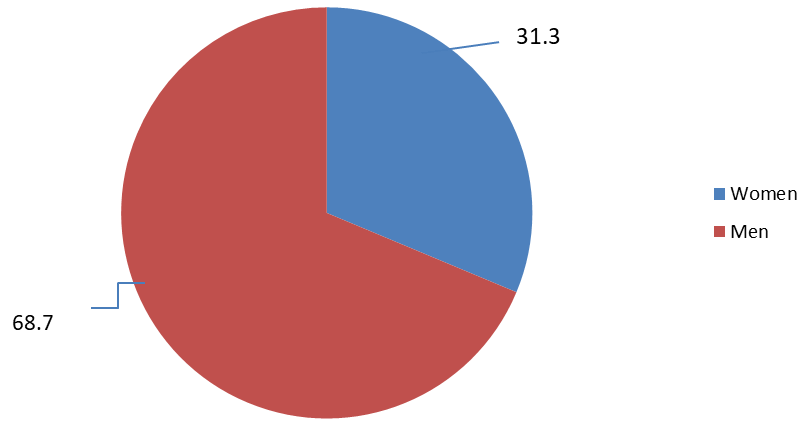
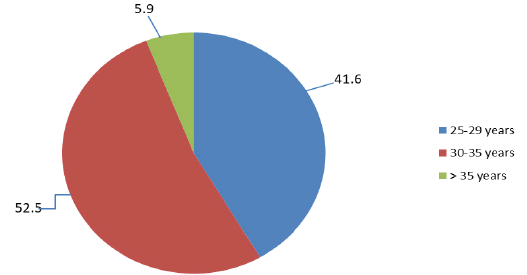
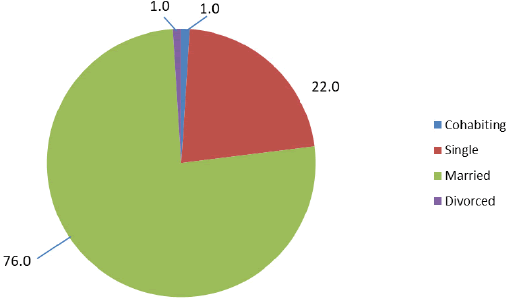
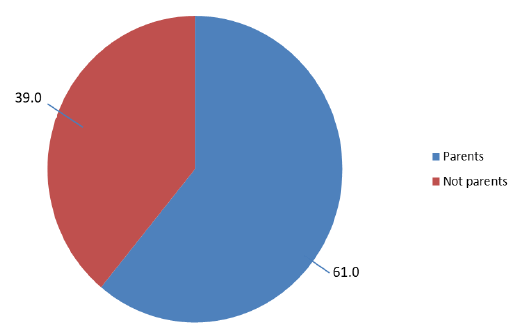
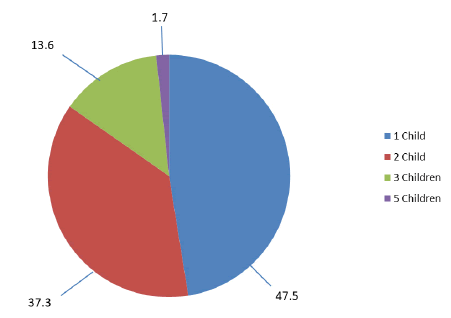
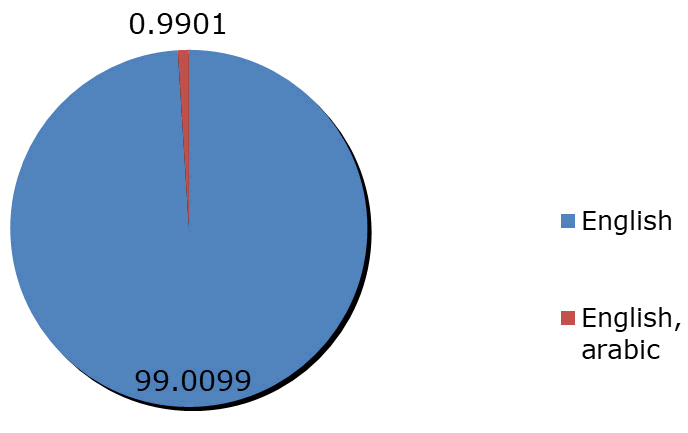
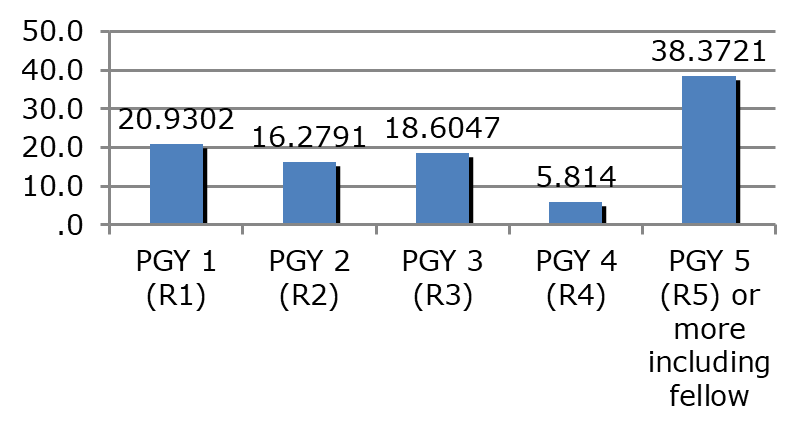
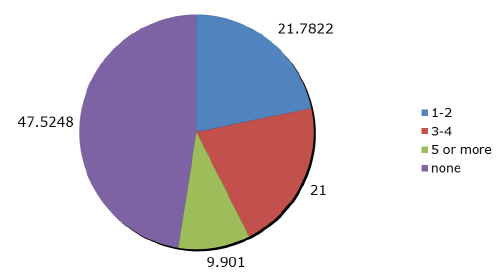
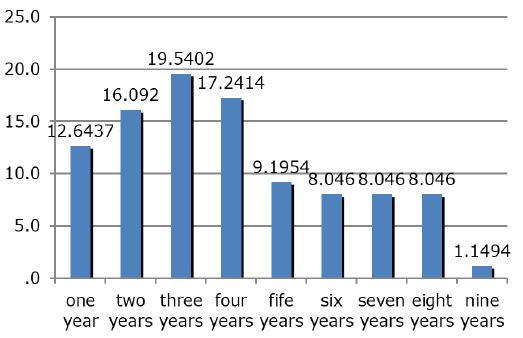
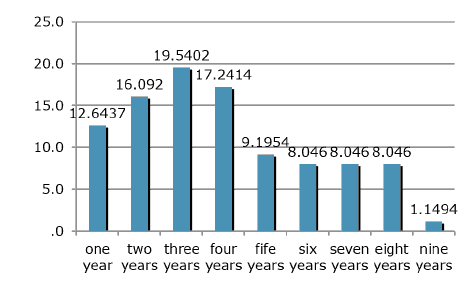
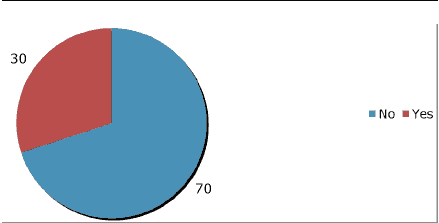
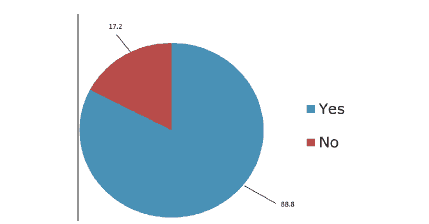



 The Annals of Medical and Health Sciences Research is a monthly multidisciplinary medical journal.
The Annals of Medical and Health Sciences Research is a monthly multidisciplinary medical journal.